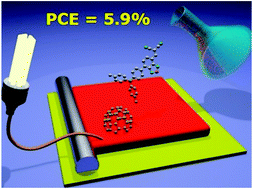Highly efficient organic solar cells using a solution-processed active layer with a small molecule donor and pristine fullerene†
Abstract
A new strategy has been successfully established to realize high efficiency small molecule organic solar cells with a solution-processed active layer composed of a small organic molecule as the donor and pristine C70 as the acceptor. Using 1,2-dichlorobenzene as solvent, a homogeneous donor/C70 blend active layer can be effectively formed either by spin- or bar-coating techniques. This method delivers organic solar cells with high power conversion efficiencies up to 5.9%.


 Please wait while we load your content...
Please wait while we load your content...